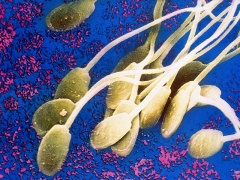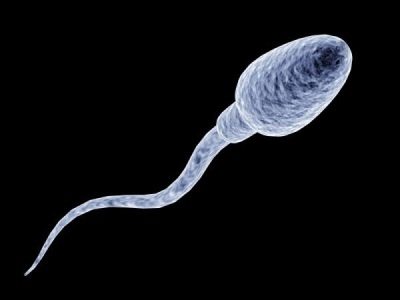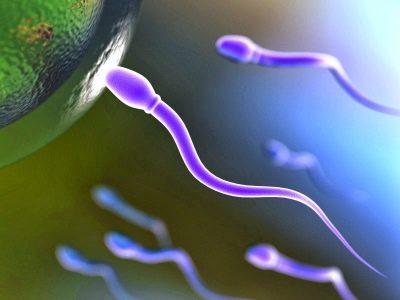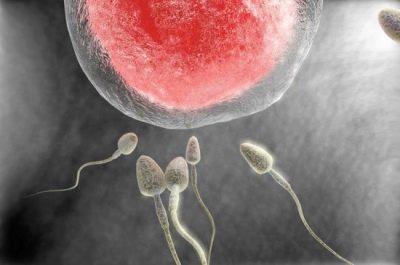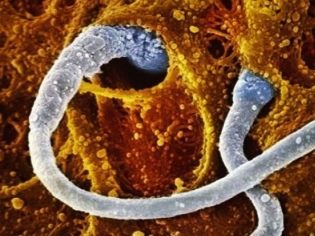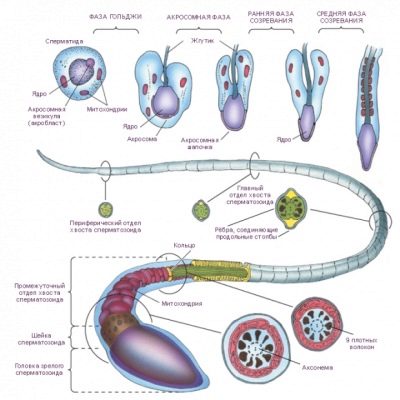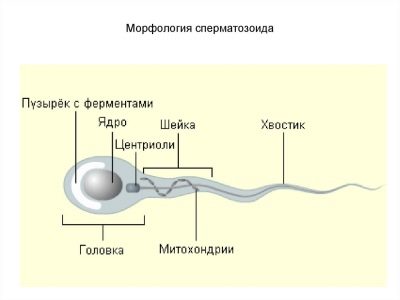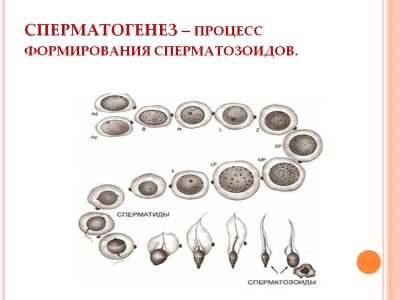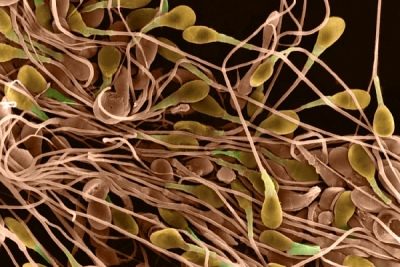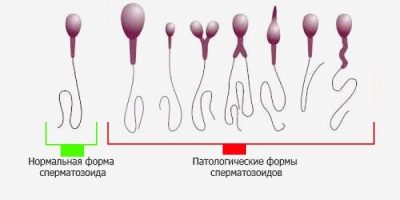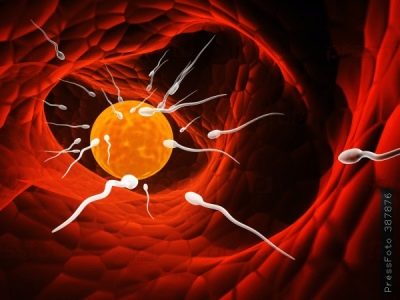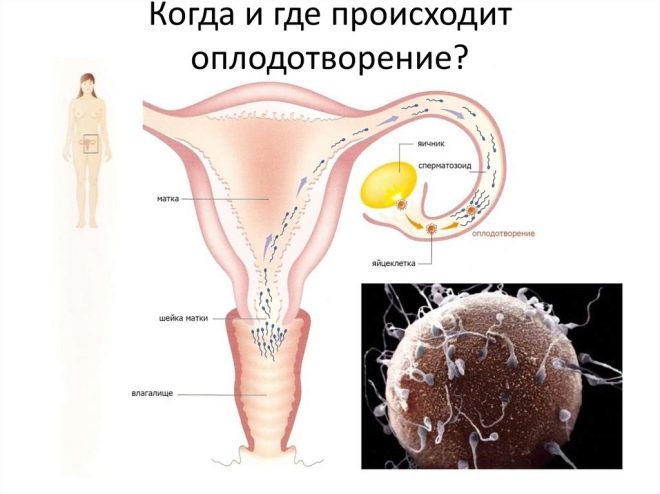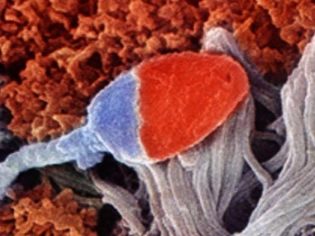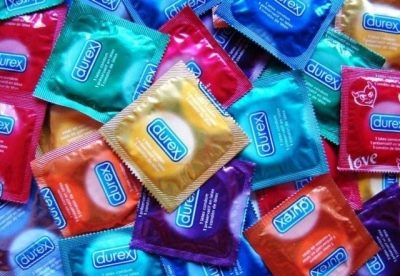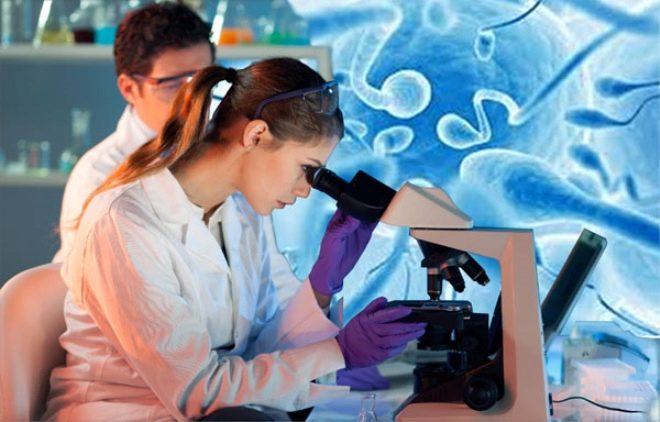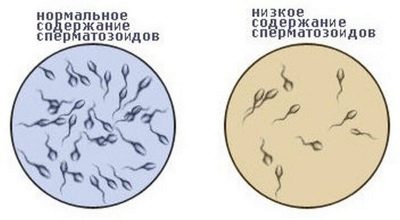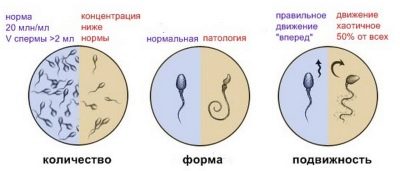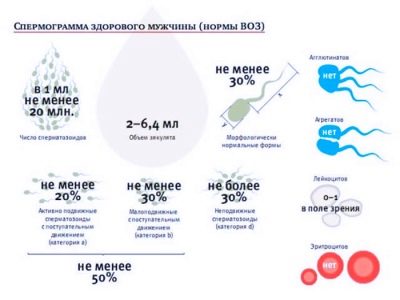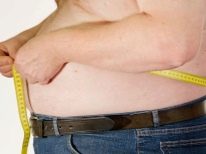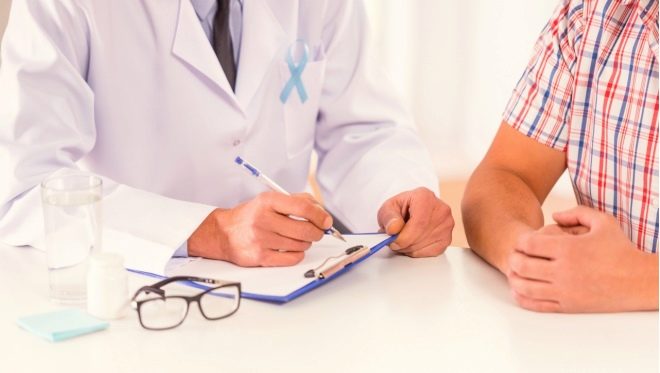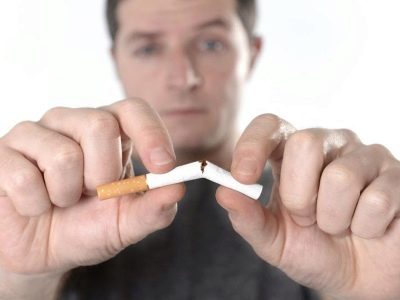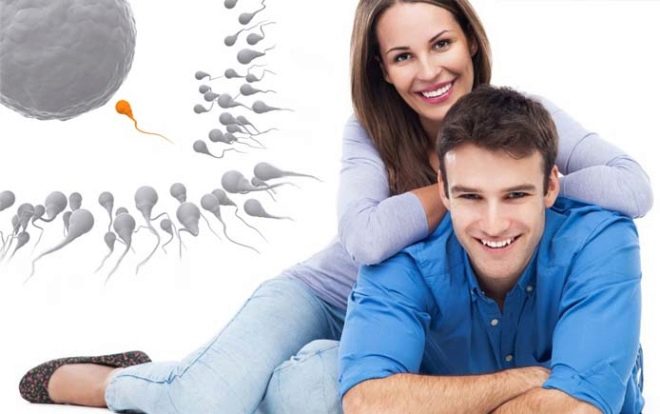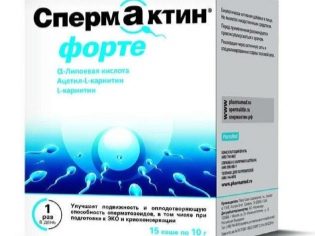How sperm are arranged? Their features, structure, size and function
About the male reproductive cells - sperm, not even many men themselves know. But information about how these cells are arranged and functioning can be very useful, especially for those who are planning to conceive a baby and take care of their reproductive health. In this article we will try to tell you as much as possible about the sperm and how to maintain the health of a man in proper form.
What it is?
The sperm cell is the sex cell of the male body (gamete). The name of the cell comes from three ancient Greek words meaning "seed", "life", "species". In fact, in the title lies the answer to the question about the main function of these small and very mobile cells. This is reproduction, procreation. Sperm cells are born, mature and come out only in order to fertilize the female egg, to transfer its genetic material to it, which together with the female will become the basic and defining genetic set for the future baby. A new organism will develop from the fertilized egg cell - the embryo, the embryo, and later the fetus.
If you look closely at the sperm in the microscope, it becomes clear that it itself reflects important and long-lasting evolutionary processes. In its structure, it resembles the common ancestor of all living organisms and fungi - a single-celled nuclear creature capable of movement due to the flagella's tail. Once upon a time it was such a creature that gave rise to life in its modern sense.
For the first time, mankind learned about the existence of special moving cells in 1677 thanks to the efforts of the famous scientist Anthony van Leeuwenhoek, who invented the microscope. He shared his invention with a friend, a medical student, Johann Gum, who, examining everything that came to hand in a miracle device, came across strange living cells in his own ejaculate. He shared this discovery with Leeuwenhoek, who was the first of the people to study and describe in detail the “seed animals” (he gave this name to spermatozoids).
Levenguk almost immediately guessed that the functions of the cells discovered by him and his friend were reproduction. About this he notified the royal British scientists. But the "luminaries" of that time only laughed at the idea and concluded that the found "livers" are nothing but useless parasites, and conception occurs only thanks to the fluid in which they float. For almost 100 years, the works of Leeuwenhuk were skeptical. Only a century later his theory was confirmed by Italian physicians and physicists, and then by Russian scientists, who in the 19th century gave the male gamete the name that is still used today - the sperm cell.
If a woman capable of conceiving has only one (rarely two) gametes every month, then a man has several tens of millions, they are produced constantly. A man thanks to these cells fertile every day, a woman can conceive only in strictly certain days of the menstrual cycle.
Specifications
Since sperm has a clearly defined specialization, it is designed in such a way as to fulfill the duties assigned to it as accurately and quickly as possible. Looks like a cage tadpole swimming head forward.The sperm will have to overcome the female reproductive tract, and this “journey” will be neither quick nor easy. When the male cell reaches the egg cell, it needs to make a gap in the dense membranes of the oocyte with the help of a pointed head and penetrate it. Egg cells reach millions of cells, but only one representative of this large "army" should fertilize it.
After fertilization, the sperm donates DNA to the egg cell - the male set, which merges with the female cell set. This is how a new, unique, unique life is born, which has no analogues on the planet. From the moment of conception, the spermatozoid determines what sex a baby will be born after 9 months. Types of spermatozoa include two types of cells - carrying the sex chromosome X and carrying the chromosome Y. If the egg is fertilized with sperm X, a girl is born, if the gamete Y is born first, the boy is born, the heir.
At the time of conception as a result of the DNA merging of the mother and father, it is determined from the very first minutes what color the child’s hair and eyes will be, how tall it will be, where birthmarks and freckles will be located, what talents and abilities the baby will have, what innate illnesses . At least half of this information carries the sperm.
The size of the sperm is very small. This cell is considered to be the smallest in the body, given the size of only one head and do not take into account the tail. In length, the sperm cell is on average 55 microns, with about 45 microns (that is, most of the length) is the tail. Nature has created a male gamete so small not by accident - small sizes contribute to greater mobility. When a cell matures, the man’s body itself does not allow at least one of the gametes to grow more than necessary. Special processes artificially inhibit cell growth — the nucleus is compacted, the extra cytoplasm is ejected to the outside in the form of a cytoplasmic drop, there is nothing superfluous inside — only the most necessary.
The structure of the sperm, despite the apparent complexity, is quite simple and straightforward. The gamete consists of three main parts - the head, the middle part and the flagellum-tail.
The head is a rounded part in the shape of an ellipsoid with small “dents” on the sides. They make the head look like a spoon. In the head is the most important part of the sperm - the nucleus carrying a single set of chromosomes. During conception, two single sets (sperm and egg) will make a complete diploid set, which will carry information about both the mother and the father. This is how the set of autosomes and the sex chromosome of the fetus is formed.
The head also contains an acrosome, a special vial filled with enzymes. These sperm enzymes will be useful at the very finish of the path to dissolve the membranes of the female germ cell. More than 15 types of enzymes that are included in this “combat” mixture will come out only when the sperm cell collides with the head with the egg cell.
In the head there is also a place for a kind of analogue of the flight control center - the centrosome. This is the center that regulates the work of microtubules responsible for the movement of the tail.
The middle part is the isthmus connecting the head and tail. A microtubule network extends through the middle part. But the tail would never move if there were no special mitochondria in the middle part that produce ATP and this unique natural source of energy allows the tail to move.
The tail is the longest and thinnest part of the male sexual cell. It consists of fibrils. The shape of the tail may be different and this ultimately determines its mobility, the speed of response to acidity and speed of movement.
Some sources add another part to the standard cell structure - the neck.It is understood that this slight narrowing is located between the middle part and the head and is a “mount” between them.
Development and maturation
Spermatozoa in male children are not formed. And this is the main distinguishing feature of the male germ cells from the female. The girl is born with a large supply of immature eggs in the follicles, which begin to mature in adolescence, when regular menstruation begins. Little boys do not have a stock of sperm. Sex cells appear for the first time in the pubertal period and are then produced throughout the life of the man.
The life cycle of sperm lasts about 80-90 days. During this time, the cells have time to emerge, go through the stage of registration and maturation. If ejaculation does not occur within three months, the adult cells die, they are replaced by young ones. Thus, in the composition of the sperm during ejaculation, there are always both live and dead sperm.
Produced cells in the genital glands - testicles located in the scrotum. For the time being (before orgasm) “spermatozoa are stored” in the epididymis, and only at the moment of ejaculation do they mix with the seminal fluid and come out. All the while sperm languishing in anticipation of their hour, they are completely immobile. They acquire activity when mixed with seminal fluid due to reaction with prostate secretion. The number of sperm is incredibly high - in one milliliter of ejaculate there are more than 20 million in a healthy man.
The process of nucleation and maturation of sperm is called spermatogenesis. When planning a pregnancy, couples must take into account the duration of this period (about 90 days) while undergoing treatment to increase fertility.
Whatever wonderful and effective drugs for improving the quality of sperm are taken by a man, the first results should be expected not earlier than in three months, when the process of updating the composition of sperm is completed.
Negative factors affecting a man in the process of spermatogenesis can lead to an increase in the number of immature, mutated cells that are incapable of fertilization, and if they are capable, they can “deliver” defective genetic material to the egg, which will lead to the formation of chromosomal babies , miscarriage, fading of pregnancy, the birth of a child with genetic abnormalities.
These factors include a violation of the temperature regime - overheating of the scrotum, wearing a man close to underwear, exposure to toxic substances and radiation. In men, in congenital malformations of the reproductive system (anomalies of the epididymis, absence of one testicle, defects of the vas deferens) one of the stages of spermatogenesis can also be disturbed or all of them are complex.
Movement and mobility
The ability to move in sperm is acquired due to the presence of the tail-flagellum. During the movement of the tail intensively rotates around its axis, giving the gamete the desired acceleration. The cage moves with a speed of 0.1 mm per second or 30 centimeters per hour. This is an unprecedented speed for such small cells, it allows them to avoid death in the acidic environment of the vagina and get to the ampullary part of the fallopian tube (this is where the egg cell that leaves the follicle and is ready for fertilization).
Given the speed of movement, it is easy to calculate that the most mobile sperm reach the female reproductive cell in about an hour and a half after ejaculation.
Movement begins a fraction of a second before orgasm. Inactive and still inactive sperm cells, sluggishly moving their tails by inertia, are guided along the spermatic cord, pushed by the contraction of the muscles of the seminiferous tubules and the vas deferens. Ejaculation occurs, during which passive sperm cells receive a substantial dose of prostate juice. This is their noticeably invigorating.
And then begins the battle for the championship.Swim small, but very stubborn sperm falls against the flow. Seminal fluid tends to exit the vagina, and tiny cells through the genital tract above. Where to swim, each sperm "knows" at the genetic level. The acrosome in the head is very sensitive to acidity and “directs” the entire cell to where the acidity is lower, that is, from the vagina to the uterus, and from there to the fallopian tubes.
Seminal fluid helps only at the initial stage - it slightly reduces the acidity inside the female vagina, then it simply flows out, having exhausted its possibilities. Part of the gametes dies at the start, some - during the passage of the vagina, and some - during the passage of the cervical canal of the cervix. Only a small percentage of “swimmers” get to the egg. Usually these are the strongest, healthiest and most mobile cells, the weak ones “go the distance” before.
In order for conception to take place, of the total number of cells that have fallen into the vagina after ejaculation, at least 10 thousand sperms should reach the ampullary part of the fallopian tube. All of them unite to attack the egg, activating the enzymes of the acrosome. Anyone who first makes a hole in the protective shell of the female cell, with high probability and fertilize it. Immediately after this, the shells become impenetrable for the rest of the “applicants” and they die in a few days.
Scientists have found that in the course of the movement, spermatozoa are capable of real miracles, which, so far from science’s point of view, cannot be explained. Thus, male gametes can not only break through against the current, but also overcome obstacles, as well as engage in active search. It is still unclear exactly how sperm cells find an egg in the wide part of the fallopian tube, but they never use the method of chaotic fermentation (perhaps the egg cell will fall), all sperm cells clearly flow only where it is located, determining the right direction (right or left) pipe), the location of the cell dislocation in the ampullary part of the pipe, as well as its readiness for conception.
In pathological forms of the gamete, if the sperm cell has a broken head structure, a tail, there are two or three tails at once, the cell will not be able to fully move, it will spin in place until it is killed by acidity in the vagina, or float in zigzags, or even go together with seminal fluid in the opposite direction - to exit from the vagina.
Viability
In the host system, immature gametes live for about 90 days. Mature cells are able to maintain their activity for 25-30 days. After the sexual intercourse has taken place and the spermatozoa have fallen into a new environment for themselves, their lifespan will depend directly on where they are.
Outdoors, sperm cells die at temperatures above and below room temperature in 15–20 minutes. If there is no direct exposure to sunlight, and the temperature is at room temperature, the cells can live up to 45 minutes. If cells got on clothes or linen, then they can remain active longer - up to one and a half hours. Therefore, the protected method of interrupted sexual intercourse must be taken into account that getting pregnant is quite realistic, putting sperm on the genitals with hands with soiled sperm clothes.
On the body of a woman or on the penis of a man, spermatozoa can maintain their viability for up to 2-3 hours. This environment is more favorable for them. In the vagina, acidity kills sperm in 1.5-2 hours. Those who managed to swim away from this dangerous place have a chance to hold out for several days. In the womb environment is most favorable. In her sperm can live up to 3-4 days, as in the widest part of the fallopian tube.
That is why days favorable for conception are considered 3-4 days before ovulation and a day after it. Spermatozoa may well wait for the release of the egg already in place. Fertilization is always possible only on the day of ovulation.
If a sperm cell enters the water, for example, when sex is in the bathroom, it is not necessary to assume that a pregnancy occurs, because in the aquatic environment, the male gamete dies in 4 minutes in the composition of the sperm with the liquid, and if a single sperm cell is placed in water, it will die within 15 seconds. Theoretically, the possibility of becoming pregnant is, but only on the condition that several liters of semen are poured into the water of a standard bath. If the sperm drip "Miramistin"Cells will die instantly.
In the condom sperm live for about an hour, if the condom was used medical, completely devoid of all lubricants and additives. If the couple used a conventional condom from a supermarket or pharmacy, then spermicidal lubricants, widely used by manufacturers of contraceptives, will not leave a single chance to gametes. In such a condom, the total death of all living sperm occurs in 4-5 minutes.
There is a theory that different types of gametes have different characteristics and ability for a long and productive life. In particular, sperm - carriers of the X chromosome, from which the conception of girls occurs, according to this theory, are less mobile, but live longer. That is why those who wish to give birth to a girl are recommended sexual intercourse 2-3 days before ovulation, so that by the time the egg leaves the follicle, only these X-spermatozoa remain alive in the funnel of the fallopian tube.
The sperm - carriers of the Y-chromosome theory ascribes other properties - speed, high mobility, but, alas, a short lifespan. Those who dream of a son are recommended to have sexual intercourse on the day of ovulation, in extreme cases, one day before or after it.
In fact, medicine does not have evidence of this theory. The study of different types of sperm did not confirm this theory, tests of viability did not show the difference between X and Y-sperm. Both those and others have the same speed of movement, and those and others live and die not because of the presence of chromosomal differences, but under the influence of the environment. therefore floor planning for ovulation seems to be a very dubious task, and the numerous forums in which women discuss the effectiveness of such planning are the most graphic confirmation of this.
But the viability of sperm plays a huge role in the probability of conception. The more tenacious the male sex cells are, the greater the chance that the pregnancy will come quickly.
It is possible to figure out how the gametes are adapted to the confrontation of external environments, how viable and mobile they are, by passing a simple and informative analysis - the spermogram.
Norms and pathological changes
Spermogram (sperm analysis) provides an answer to many questions concerning the causes of marital infertility, because in 40% of cases the absence of conception occurs due to violations of the quality or number of spermatozoa in a man. The study is carried out by microscopic methods, these calculations are quite accurate, since they are carried out using special counting chambers and sperm analyzers.
Normally, in a healthy man, the total volume of ejaculate should be at least 1.5-2 ml. If it is smaller, the diagnosis is “oligospermia,” but if there is no sperm during orgasm at all, the man is diagnosed with aspermia. The sperm concentration in 1 milliliter of seminal fluid is normally 15-20 million cells. If their number is lower, the diagnosis “oligozoospermia” is made. If no sperm is found in seminal fluid at all, the diagnosis sounds differently - azoospermia.
The motility of sperm formed the basis for the division of spermatozoa into four groups: active-mobile (group A), mobile (group B), slow-moving (group C) and stationary (group D). A man is considered reproductively healthy and capable of natural conception, if not less than 40% of the sperm of group A and B in total are present in his ejaculate. If weak, sluggish and immobile genital cells in general prevail with a big advantage, the man is diagnosed with “teratozoospermia”. When complete immobility diagnosed acneospermia.
Normal showed sperm patterns imply the presence in the ejaculate of at least 58% viable sperm. If there are no live spermatozoa, a necrospermia is diagnosed. Special attention is paid to the morphological forms. By this concept is meant the determination of the content of sperm cells that are ideal in their structure.
An ideal or reference is considered to be such a sperm cell, in which all the characteristics of the structure (head, neck, middle part and tail) are completely in accordance with the standards in form, size, appearance. All "livelihoods" who have at least one deviation are eliminated. An enlarged or reduced head, deformation of its forms, the presence of two heads at the same time, thinning or thickening of the middle part, shortening or deformation of the tail, its bends and creases, the presence of two or more tails - all these are pathological forms.
For a normal natural conception, it is necessary that the ejaculate be at least 4% of the standard gametes.
Cells with head abnormalities increase the risk of having a baby with chromosomal abnormalities and generally reduce the fertility of the male. Gametes with tail pathologies are characterized by impaired mobility and conception in many cases becomes impossible. When a large number of abnormal, mutated cells are detected, the diagnosis “teratozoospermia” is made.
There are also other pathologies associated with the presence in the ejaculate of what is not supposed to be normal there - pus and blood (pyosmermia and hemospermia). All of these violations are common factors of male infertility.
Disorders develop for a number of reasons - from genetic congenital abnormalities in the structure of the reproductive organs to injuries of the penis and scrotum, which a man could have gotten in a fight or as a result of an accident. Quite often, violations in the structure and functions of sperm cells develop due to the unfavorable ecological situation in the area where the man lives, because of work in hazardous production, or because of systematic contact with toxic substances. Common causes include overweight and metabolic disorders, hormonal disruptions, addiction to alcohol, nicotine, and drugs.
Constant stress, lack of sleep and night shifts, sedentary lifestyles and unhealthy diets, past sexually transmitted diseases and genital infections, especially if they have not been treated in time, as well as inflammatory diseases such as prostatitis, have a detrimental effect on sperm health and function.
For the most part, sperm abnormalities can be cured and male fertility returns. The treatment does not bring results only in case of congenital male infertility caused at the genetic level.
In all other cases, adherence to the recommendations and prescriptions of the doctor helps to increase the number of active and mobile gametes, increase the number of ejaculate, increase the number of morphologically ideal, germ cells over 1-2 cycles of spermatogenesis (3-6 calendar months).
How to improve the composition of sperm?
For the treatment of all types of male infertility associated with poor sperm quality, common standards apply. Of course, much depends on the true cause of the pathology.If it lies in inflammation or infection, first the representative of the stronger sex has to undergo a course of treatment with antibiotics or anti-inflammatory drugs. If the cause is varicocele, first perform a surgical operation to eliminate the varicose vasculature of the scrotum.
But in most cases, it is universal recommendations that allow a man to quickly increase sperm performance, improve the quality of sperm in general and sperm in particular. Firstly, the man will have to work on his own lifestyle and make the appropriate correction.
The scrotum can never under any circumstances overheat! Nature has provided for the gametes the most optimal temperature conditions, placing the scrotum outside the body so that it cools. If a man is an avid fan of the bath or likes to visit the sauna often, his risk of developing sperm pathologies increases. The same applies to motorists who every day in the cold season include electric heating car seats. To improve reproductive health, overheating should be avoided and comfortable and spacious underwear should be worn - tight swimming trunks, thongs, tight pants not only disrupt heat transfer, but also impair the blood supply to the genital and pelvic organs.
Stress destroys sperm. When a man is in a state of constant nervous tension, his hormones change - stress hormones suppress the production of testosterone, which is necessary for the maturation of young, immature spermatozoa. As a result, the number of healthy and mature sperm decreases, the number of immature and immobile, dead cells increases.
The solution of the problems tormenting a man, the help of a psychologist and psychotherapist, a change of work and place of residence, and sometimes a sexual partner usually speaks well, and after three months the composition of the ejaculate is significantly improved.
From bad habits should be abandoned. Alcohol, nicotine and all kinds of drugs not only reduce the characteristics of gametes, but also lead to their mutations. That is why drinking men and men who have problems with drugs rarely give birth to healthy children. It is best to give up bad habits in advance, at least six months in advance, so that 1-2 cycles of normal spermatogenesis can correct the "mistakes" of their host.
It is advisable to start planning after the control spermogram to make sure that the gamete morphology is satisfactory.
In all the measure is needed. This applies primarily to work, sports and nutrition. Impact work for 26 hours a day will not bring benefit, therefore for a man in need of restoring his health and sperm characteristics, night sleep with a duration of at least 8-9 hours is important. It is at night in the body produces many hormones and enzymes. A man who is deprived of a night's sleep can quickly become barren. It is not worth the shock to do hard physical work, wear out to work in the gym. Any excessive physical exertion is detrimental to the state of sperm.
Nutrition for the correction of male reproductive health disorders is based on the principles of proper nutrition. It should be balanced, regular. On the table, a man who dreams of happy fatherhood must have milk, meat, eggs, fish, cottage cheese, butter, herbs, vegetables and fruits. For the sake of the future child for a while it is worth refusing vegetarianism if the man adheres to such a worldview. Fast food is generally dangerous because it contains a huge amount of dyes, flavor enhancers and concentrates that destroy the structure of germ cells. If there are problems with weight, be sure to address it.
With medication you need to be careful. Even the most common "ascorbic" can cause an overdose, let alone serious drugs.Men should only take medicine when the doctor insists on it. Unauthorized treatment of headache and toothache with pills, fever and cough can lead to some form of infertility. The most dangerous for male gametes are antibiotics, hormonal agents (including anabolic steroids, which some men take to maintain a better physical fitness), anticonvulsants, painkillers and psychotropic drugs. Preparation for conception is desirable 3 months after the course of treatment.
Sex life should be measured. This means that abstinence, as well as frequent sex, affects the properties of sperm. Rare sex is the surest way to reduce the number of live sperm, increase the viscosity of the ejaculate, reduce the mobility of gametes. Frequent sex can lead to dilution of the ejaculate, a decrease in its sperm concentration in general and live and active gametes in particular.
Before conceiving, it is recommended to abstain for 3-4 days, at other times, to normalize the composition of seminal fluid, it is recommended to have sex in the rhythm of 3-5 intercourse per week.
Take vitamins and supplements. Special vitamin complexes for men and biological supplements (Spermaktiv, Proffertil, Viardot and others) will help to normalize the processes of spermatogenesis at a thin cellular and biochemical level. The course of treatment is usually long - from 3 to 6 months.
In addition to improving the quality of sperm, these drugs help to cope with the premature release of semen, increase libido, and partially improve potency.
Amazing facts
You may be interested in the following facts.
- The aquarium fish tetradon has spermatozoa with two flagella. They are more mobile than human.
- In roundworms, sperm do not have tails at all. The oval heads of the gametes are moved on the prolegs with low speed.
- Kangaroo sperm work "in pairs". They come together in two and move together, helping each other with the simultaneous waving of tails. Partner cells become competitors only when together they reach the egg.
- In mice and rats, the sperm heads are hook shaped.
- Human spermatozoa are among the smallest in nature. Mouse gametes are 1.5 times more human, and the spermatozoon of a newt is more than a human gamete 5 times!
- The volume of a healthy male ejaculate is exactly half a teaspoon.
- Don't underestimate sperm. If all the cells that make up the ejaculate after one standard sexual intercourse, put one after another in a straight line, you get a length of 9 kilometers 600 meters!
- Dead gamete may well lead to the birth of a live child. If a man is dead all sex cells, under laboratory conditions it is possible to obtain valuable DNA from the head of a dead cell and to provoke fertilization under a microscope. The main thing that the genetic set was full.
- A woman loses the ability to conceive with the onset of menopause. For a man, the gamete factory works all his life. Even an older man can become a dad.
- One testicle may well provide a man's reproductive health. If the second is lost as a result of injury or is missing from birth, the second begins to produce more sex cells.
The most famous positive example is American cyclist American cyclist Lance Armstrong. A man had one testicle amputated due to a cancerous tumor. With only one testicle, the athlete could become the father of five strong and perfectly healthy babies.
On the structure, size and function of sperm, see the following video.
